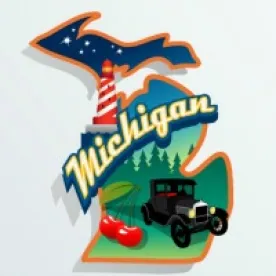After weeks of speculation and rumors, the Ford Motor Company announced its purchase and plan to invest over $1 billion into the Michigan Central rail depot in Detroit’s historic Corktown neighborhood. Made public 115 years to the day after Henry Ford signed the company’s articles of association, Ford plans the investment to mark a new chapter for the company, the city, and – most importantly – the future of transportation.
The massive 18-story Beaux-Arts structure sat empty since the last train’s departure in January of 1988. Financed by the Vanderbilt railroad empire and once the point of arrival for luminaries ranging from Franklin Roosevelt to Harry Houdini, the station has in recent decades been a target for looters, ‘ruin porn’ photographers, and urban explorers hoping to catch a glimpse of Detroit’s former opulence and subsequent socioeconomic difficulties.
In addition to the purchase of the station itself, the investment follows Ford’s systematic acquisition of the former Detroit Public Schools Book Depository, two acres of vacant land, the site of an old brass factory, and the recent purchase of a refurbished former pantyhose factory in Corktown – now home to Ford’s electric and autonomous vehicle business teams.
From a local standpoint, Ford’s investment in its hometown is good news. It has been lauded by Detroit leaders and businesspeople such as Quicken Loans founder Dan Gilbert as “phenomenal”, and Mayor Mike Duggan praised the Dearborn-based automaker’s efforts to invest in urban centers as well as their traditional suburban developments.
Closer inspection of Ford strategy in recent months indicates growing and aggressive global market ambitions in addition to this hometown pride. Ford wants to once again rewrite the transportation playbook, and appears to be positioning itself to act as the market disruptor it proved itself to be with the Model T, Rouge River Plant, and Whiz Kids management science pioneers of the 20th Century. This time, in addition to taking on railroads and other automakers, the Blue Oval of the 21st Century appears ready to go toe-to-toe with Silicon Valley from its new development in Detroit.
Evidencing this outlook is a keynote address given by Ford President and CEO Jim Hackett at the CES Conference in Las Vegas earlier this year. In his statement Mr. Hackett spoke of the freedoms, and challenges, that the automobile has spawned. He stressed that roads and urban centers – the original shared resource for most communities – have thus far been largely left out of discussions in a new era of sharing economies. In addition to emphasizing the importance of autonomous vehicle development, Hackett also stressed the need to effectively leverage artificial intelligence, big data, and civil collaboration to take a user-centered approach to the redesign of transportation technologies.
With these sentiments in mind, the Michigan Central acquisitions fits squarely within aggressive goal-setting strategies for the future of transportation at Ford. After the restoration of the station and surrounding campus, expected to take four years, Michigan Central will become the focal point for Ford’s autonomous and electric vehicle testing center with upwards of 5,000 employees working in Corktown. In addition, civil collaboration will be supported with over 300,000 square feet pledged to mixed use retail space. The hope is for the station to be a meeting spot and center of urban activity similar to San Francisco’s Ferry Building as well as a springboard for the Midwest’s growing venture capital and research corridor activities. Some are even calling for trains to return to Michigan Central as a way to expose travelers to Ford’s future mobility technologies.
Though questions remain, the ambitions of the Ford Motor Company are unquestionably clear. With its investment in Corktown, Ford is seeking to solidify the message that Detroit is open for business and that it wants to use its Midwest foothold to lead the industry in changing how people think about, and invest in, transportation. Jim Hackett struck this point home most clearly when he recently stated the case for Detroit’s continued leadership in transportation technologies. “Palo Alto is about moving bits. We’re about moving people,” said Hackett during a press conference in front Michigan Central three days after the announcement. “This can be our Sand Hill Road.”
Please note Foley Summer Associate, Ken Johnson was a contributing author of this post. The Dashboard Insights team thanks him for his contributions.




 />i
/>i

